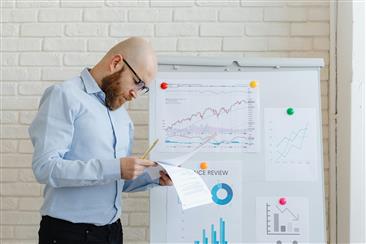
Few economic phenomena in recent history have been as globally misunderstood, unevenly felt, and politically charged as the inflation surge that followed the COVID-19 pandemic. What began as a health crisis quickly became a supply chain crisis, a labor crisis, and ultimately, an inflationary one. Between 2020 and 2024, prices climbed at the fastest pace in decades across much of the world, catching central banks off guard and testing public trust in economic policy.
As the dust begins to settle, economists, policymakers, and businesses are still sifting through the experience, attempting to understand what went wrong—and what must be done differently next time. The answers are neither simple nor universal. But some hard-earned lessons have begun to emerge.

A Perfect Storm, Not a Single Cause
One of the biggest takeaways from this period is that inflation rarely has a single root cause. From 2020 to 2022, price increases were driven by a tangled mix of factors: unprecedented fiscal stimulus, supply bottlenecks, rising commodity prices, labor shortages, and shifts in consumer behavior.
Governments, especially in the U.S. and Europe, pumped trillions into their economies to avoid mass unemployment and business closures. While necessary to prevent a deep depression, the sheer size and speed of that spending overwhelmed supply chains not built for sudden spikes in demand. Goods became scarce, shipping costs soared, and prices followed.
At the same time, people spent differently. With services like travel and dining restricted, demand shifted toward physical goods—home improvements, electronics, exercise equipment. Factories struggled to keep up, especially in Asia, where intermittent lockdowns slowed output.
Add to that geopolitical events—such as the war in Ukraine in 2022—which sent energy and food prices skyrocketing, and you had a perfect storm.
The Misreading of “Transitory” Inflation
Another key lesson involves the early narrative around inflation. Many central banks, including the U.S. Federal Reserve and the European Central Bank, initially framed the inflation spike as “transitory”—a short-term blip that would ease once supply chains normalized.
But inflation proved more persistent. Rent prices, wages, and services began to rise alongside goods. By the time central banks adjusted their stance and began raising interest rates aggressively, inflation had already worked its way into the core of many economies.
This delay taught policymakers and economists an uncomfortable truth: relying on old models—built in an era of low inflation and global trade stability—may no longer be enough. The world had changed, and policy responses needed to be quicker, more adaptive, and better tuned to real-time data.

Interest Rates and the Lag Effect
When inflation took hold, the primary tool to combat it was the interest rate. Central banks raised rates repeatedly between 2022 and 2023, in some cases reaching levels not seen since before the 2008 financial crisis.
These hikes eventually helped cool demand, slow borrowing, and temper inflation. But they also came with side effects: slower economic growth, fragile housing markets, and increased borrowing costs for both households and governments.
One lesson here is the lag time. Interest rate changes do not affect the economy instantly. It can take months—or longer—for higher rates to filter through markets, affect spending, and influence pricing. In hindsight, some analysts believe that had central banks acted earlier, they might have avoided such steep rate hikes and reduced the risk of recession.
Winners and Losers in an Inflationary World
Inflation does not affect everyone equally. That was especially clear between 2021 and 2023, when rising costs of essentials—food, fuel, and rent—hit lower-income households much harder than wealthier ones. While some people benefited from rising asset prices, such as real estate and stocks, many others found themselves falling behind.
One of the lasting takeaways is that inflation isn’t just an economic issue—it’s a social and political one. Governments that failed to address the uneven impact faced protests, political pressure, and eroded public trust. In response, some countries introduced targeted subsidies, price caps, or tax relief measures, but these often had limited effects or created their own distortions.

Supply Chains Under the Microscope
Perhaps no area of the global economy was more exposed during this period than supply chains. Long heralded for their efficiency, global supply networks proved vulnerable when stretched or disrupted. Shortages of semiconductors, medical equipment, and even basic household items revealed just how fragile the “just-in-time” model had become.
As a result, many companies began reassessing their operations. Nearshoring, reshoring, and diversification of suppliers gained traction. Countries, too, started pushing for domestic production in key sectors like energy, medicine, and technology components.
This marks a significant shift. While efficiency once drove decision-making, resilience is now taking a front seat. The economics of trade and production may never be the same.
What We’ve Learned—and What Remains Uncertain
While inflation has slowed in most major economies by 2024, it has not vanished. Prices remain elevated compared to pre-2020 levels, and for many people, wage gains have not kept up. Central banks are now trying to strike a delicate balance: keeping inflation under control without stalling growth entirely.
Some of the lessons from this period are straightforward:
- Timely response matters. Delaying action—whether in the hope that inflation will pass or out of fear of market reaction—can make things worse.
- Data must be read in context. Traditional inflation models may not capture the full complexity of a globalized, digital, and demographically shifting economy.
- Social impact matters. Price instability undermines trust and widens inequality, making it a political concern as much as an economic one.
- Supply chains need flexibility. Pure efficiency can leave systems brittle. Redundancy and regional diversity now hold greater value.
Still, many questions remain. What is the long-term impact of massive government debt taken on during the pandemic? How should countries prepare for future price shocks—whether from climate, conflict, or pandemics? And can monetary policy alone be expected to manage inflation in an increasingly volatile world?
Conclusion: A Period That Reshaped Assumptions
The inflationary surge of the early 2020s will be remembered not just for its financial impact, but for how it reshaped fundamental assumptions. Policymakers, investors, and everyday people were reminded that prices do not stay stable on their own—and that managing them requires more than interest rates and projections.
It demands awareness, agility, and a recognition that the global economy is both more connected and more vulnerable than many believed. The period from 2020 to 2024 was not just a chapter of economic strain—it was a wake-up call. What comes next will depend on whether that call was heard.






